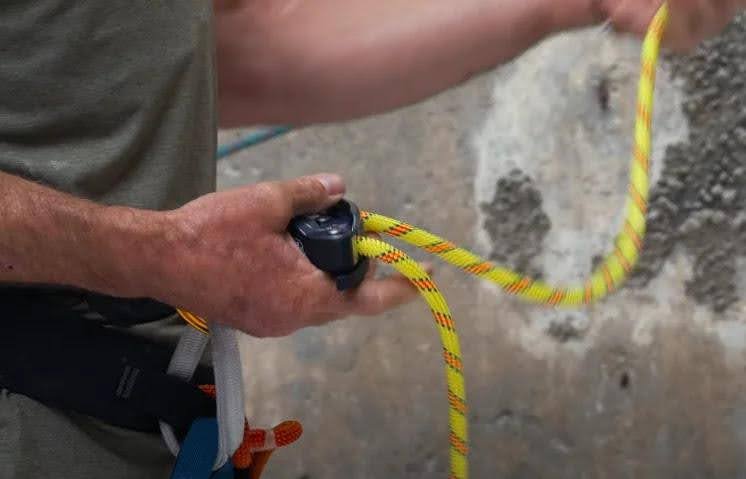


Lead Climbing
…What is it?
Lead climbing, also referred to as leading, is a technique utilized in rock climbing. It involves the lead climber attaching their rope to the climbing protection as they ascend the climbing route. Meanwhile, the second climber, known as the belayer, remains at the base of the route and is responsible for belaying the rope to ensure the lead climber's safety in the event of a fall.
Lead climbing is commonly practiced in Sport, Trad, and Multi-Pitch climbing.
What is needed?
Bare minimum (Indoor Sport)
Harness
Belay Device
Rope
Quick Draws
Optional Equipment
Helmet
Edelrid OHM
Grigri or Assisted Belay Device.
Belay Glasses
Rope Bag
much… much more…
Equipment
and how to maintain it
Quickdraws
Quickdraws are essential equipment in rock climbing as they are used to connect ropes to the wall. They consist of two carabiners connected by a piece of webbing known as a "Dog Bone." The webbing comes in various lengths and thicknesses, with the most common length being 12-18 cm. Quickdraw carabiners can have straight or curved gates, and they may feature solid gates, double wire gates, or single wire gates.
To ensure the safety and functionality of quickdraws, regular checks and maintenance are necessary.
Check for:
wear
sharp edges
functionality of the gates
signs of wear or tearing in the webbing
Ropes
In rock climbing, ropes play a vital role, and they come in various sizes, diameters, colors, treatments, and types. Climbing ropes typically range in diameter from 9-13mm and have lengths varying from 30m to 70m. There are two main types of climbing ropes: static and dynamic. It is important to note that only dynamic ropes should be used for lead climbing. Ropes can also come with or without a dry treatment.
Regular rope checks are necessary to ensure their safety.
Check for:
damage and fraying
discoloration
sun fading
flat spots and core shots
Belay Devices
Belay devices are mechanical pieces of equipment that come in various styles and shapes. The most common belay device is an ATC, which is simple in design. For lead climbing, it is recommended to use an assisted braking device, such as a grigri. However, any belay device can be used for lead climbing as long as the brake hand never leaves the rope.
Regular checks should be conducted on belay devices to ensure their safety.
Check for:
wear
sharp edges
functionality.
Maintenance
Soft materials (ropes, webbing, etc.)
Wash your rope regularly!
Machine wash on delicate with a mild-detergent (Dawn)
Lay out rope on towel to air dry allow 24-48 hours to completely dry.
Don’t use your rope while wet!
A fan may be used to speed up drying time
Don’t hang your rope, use heat, or use sunlight to dry
Hard Materials (Belay Devices, Carabiners, etc.)
Use warm soapy water and a soft bristle brush
Use microfiber rag to dry/clean
Use silicone based dry lubricant for any cams or moving parts (WD-40 Drylube)
Recommended Techniques
Whatever you do….
don’t be THIS guy….






But the PROFESSIONALS do it...
Attempting to belay without a brake hand in rock climbing is like playing Russian roulette – a risky move that's best left to the daredevils. Remember, it's not the belayer's life on the line, so don't turn your climber into a real-life game of "trust fall gone wrong." Keep both hands on the rope and ensure the safety of your climbing partner. And if you need more convincing than that… here’s why







